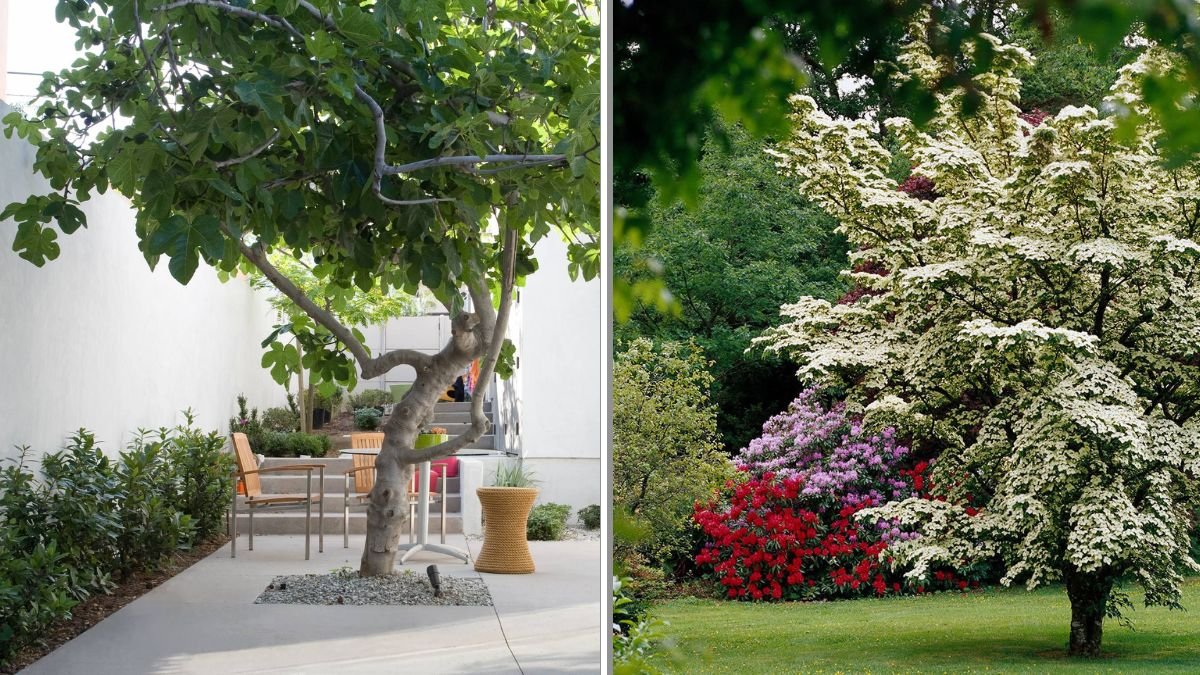Urban living often means making the most of compact outdoor spaces. While you may think a small backyard can’t accommodate trees, the truth is that many species are well-suited to tight areas. With careful selection, you can enjoy shade, privacy, seasonal color, and even fruit—without overwhelming your yard.
The key is choosing trees with modest mature sizes, non-invasive roots, and appealing ornamental features. Here are eight trees that thrive in small urban backyards, along with tips for planting and care.
1. Japanese Maple (Acer palmatum)
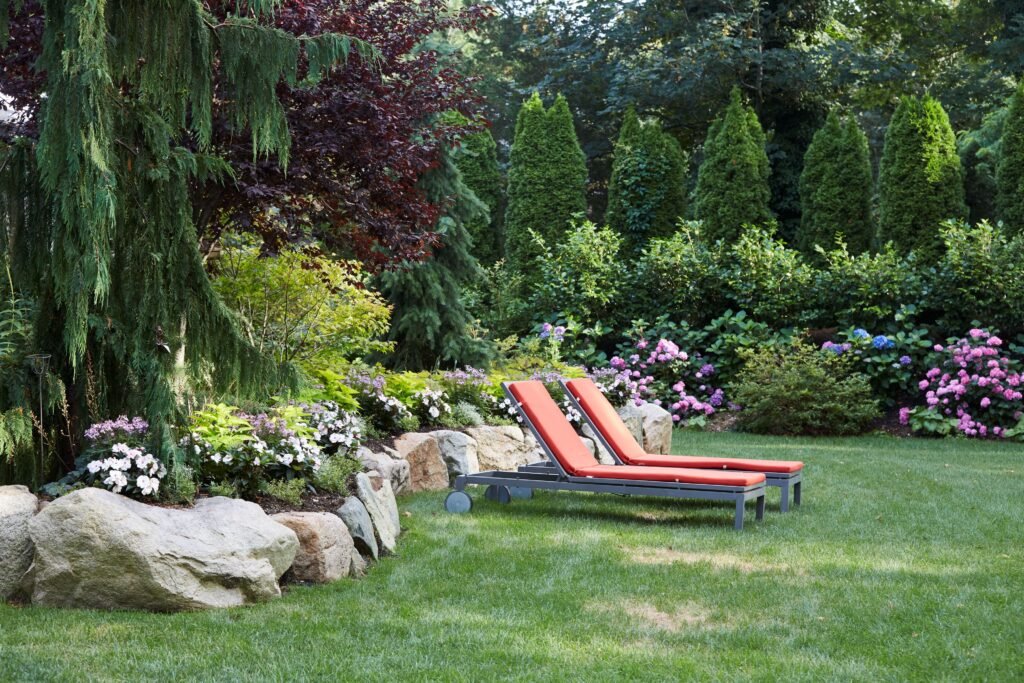
Japanese maples are prized for their graceful form and stunning foliage, which ranges from deep red to bright green depending on the variety.
- Height: 10–25 feet (depending on cultivar)
- Best feature: Striking leaves and delicate branching structure
- Why it works in small spaces: Compact size and slow growth make it ideal for urban courtyards and patios.
- Care tip: Prefers partial shade and moist, well-drained soil. Protect from harsh afternoon sun in hot climates.
2. Serviceberry (Amelanchier canadensis)
Serviceberry is a four-season beauty: white blossoms in spring, edible berries in summer, brilliant red-orange foliage in fall, and attractive bark in winter.
- Height: 15–25 feet
- Best feature: Multi-season interest and wildlife value
- Why it works in small spaces: Naturally narrow growth habit; can be trained as a single-stem tree or multi-stem shrub.
- Care tip: Plant in full sun to partial shade. Birds love the berries, so harvest early if you want to enjoy them.
3. Eastern Redbud (Cercis canadensis)
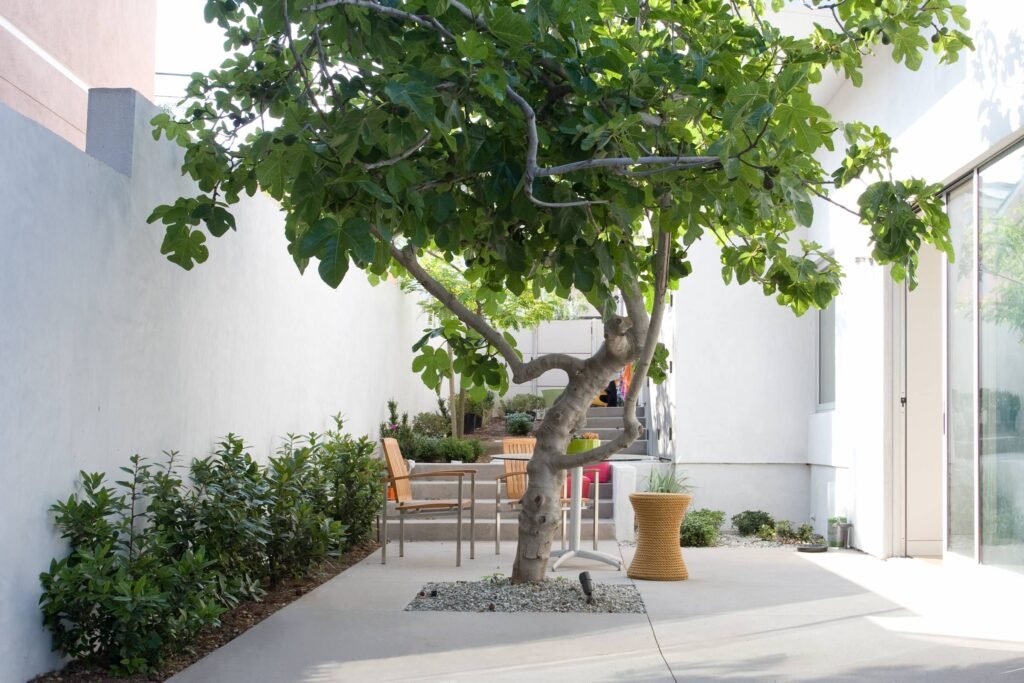
The redbud is one of the earliest bloomers, with branches covered in bright pink to purple flowers before leaves appear.
- Height: 20–25 feet
- Best feature: Spring blossoms that light up the yard
- Why it works in small spaces: Modest size and spreading shape provide shade without dominating the landscape.
- Care tip: Tolerates a variety of soils but thrives in well-drained conditions with full sun to light shade.
4. Crabapple (Malus spp.)
Modern crabapple cultivars are smaller and disease-resistant, offering breathtaking spring blossoms and colorful fruit that persists into winter.
- Height: 15–20 feet
- Best feature: Abundant flowers in pink, white, or red
- Why it works in small spaces: Compact size; fits neatly in front yards, side yards, or patios.
- Care tip: Plant in full sun for best blooms. Choose disease-resistant varieties to avoid apple scab and mildew.
5. Crape Myrtle (Lagerstroemia indica)
Beloved in warmer climates, crape myrtles produce vibrant summer flowers in shades of pink, purple, white, or red.
- Height: 12–25 feet (depending on cultivar)
- Best feature: Long-lasting blooms and colorful bark
- Why it works in small spaces: Many dwarf and semi-dwarf varieties are available, perfect for tight urban yards.
- Care tip: Requires full sun and well-drained soil. Prune lightly to maintain shape, avoiding severe “topping.”
6. Dwarf Magnolia (Magnolia stellata or Magnolia grandiflora ‘Little Gem’)
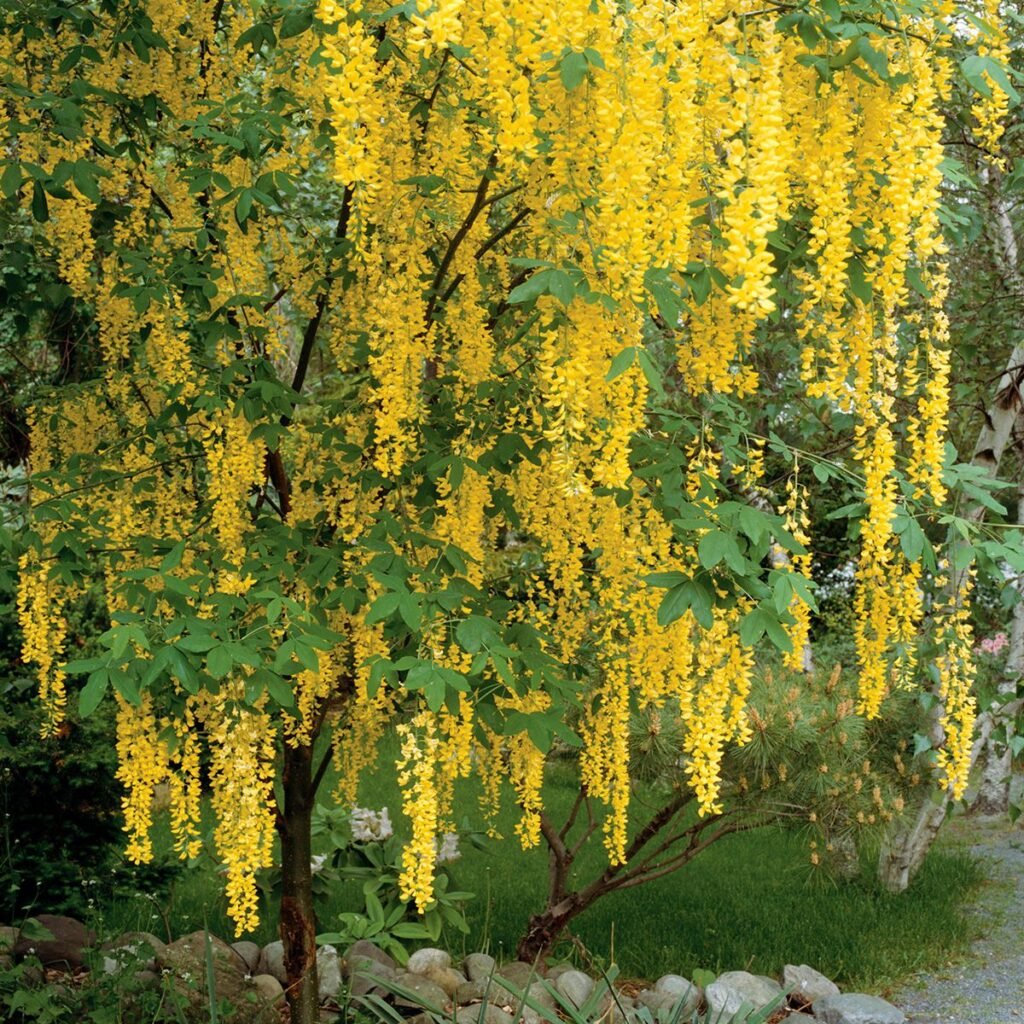
Magnolias are classic landscape trees, and dwarf varieties bring the same charm to small gardens.
- Height: 10–20 feet
- Best feature: Showy spring or summer blooms, often fragrant
- Why it works in small spaces: Compact cultivars provide ornamental beauty without overwhelming the yard.
- Care tip: Prefers full sun to partial shade and consistently moist soil.
7. Amur Maple (Acer ginnala)
A hardy, compact maple species, the Amur maple is known for its fiery fall foliage and manageable size.
- Height: 15–20 feet
- Best feature: Brilliant red autumn leaves
- Why it works in small spaces: Multi-stemmed growth habit allows flexibility; can also be pruned as a hedge.
- Care tip: Plant in full sun for best color; adapts well to urban conditions.
8. Olive Tree (Olea europaea, or cold-hardy cultivars)
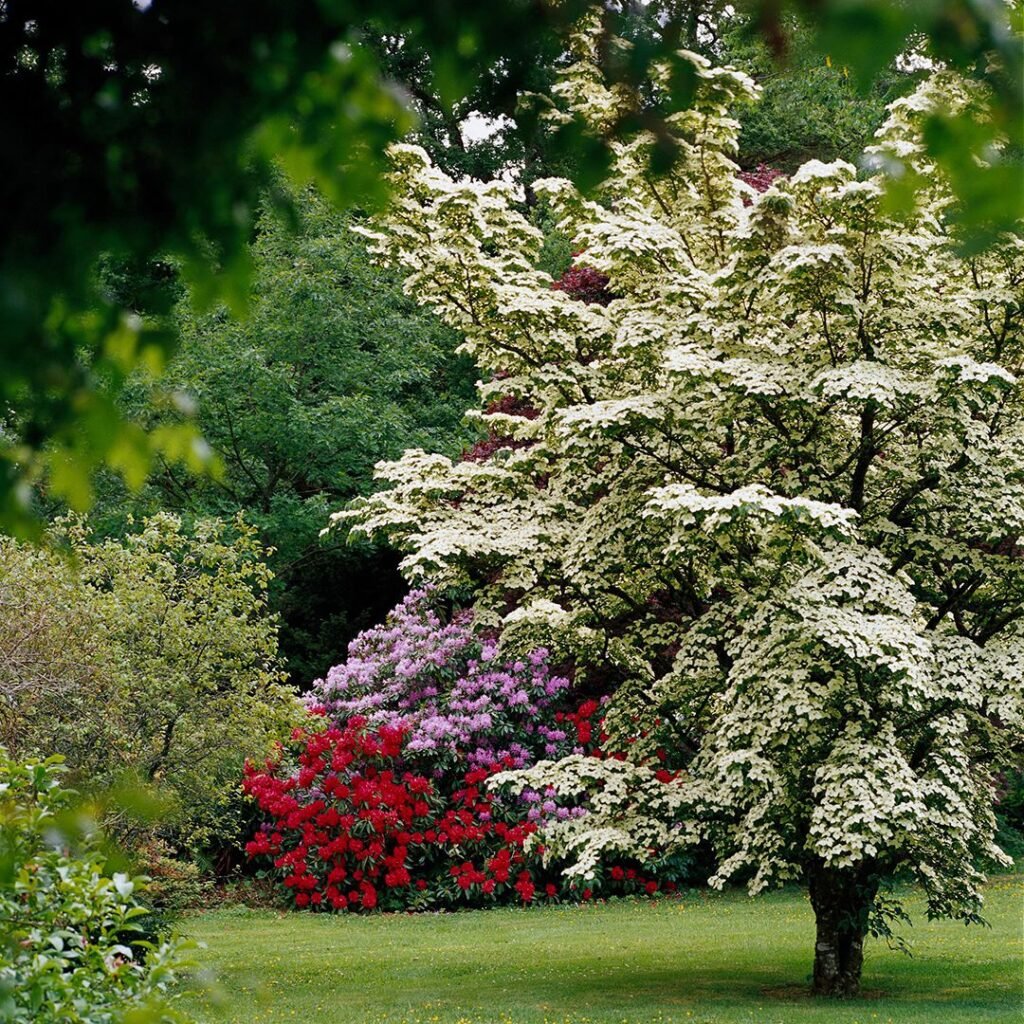
For Mediterranean charm, olive trees are an excellent choice. In warmer regions, they produce fruit; in cooler zones, cold-hardy or ornamental varieties can be grown.
- Height: 10–20 feet
- Best feature: Silvery-green foliage and sculptural form
- Why it works in small spaces: Slow growth and compact canopy fit perfectly into urban courtyards.
- Care tip: Needs full sun and well-drained soil. In colder climates, consider growing in containers that can be overwintered indoors.
Tips for Planting Trees in Small Backyards
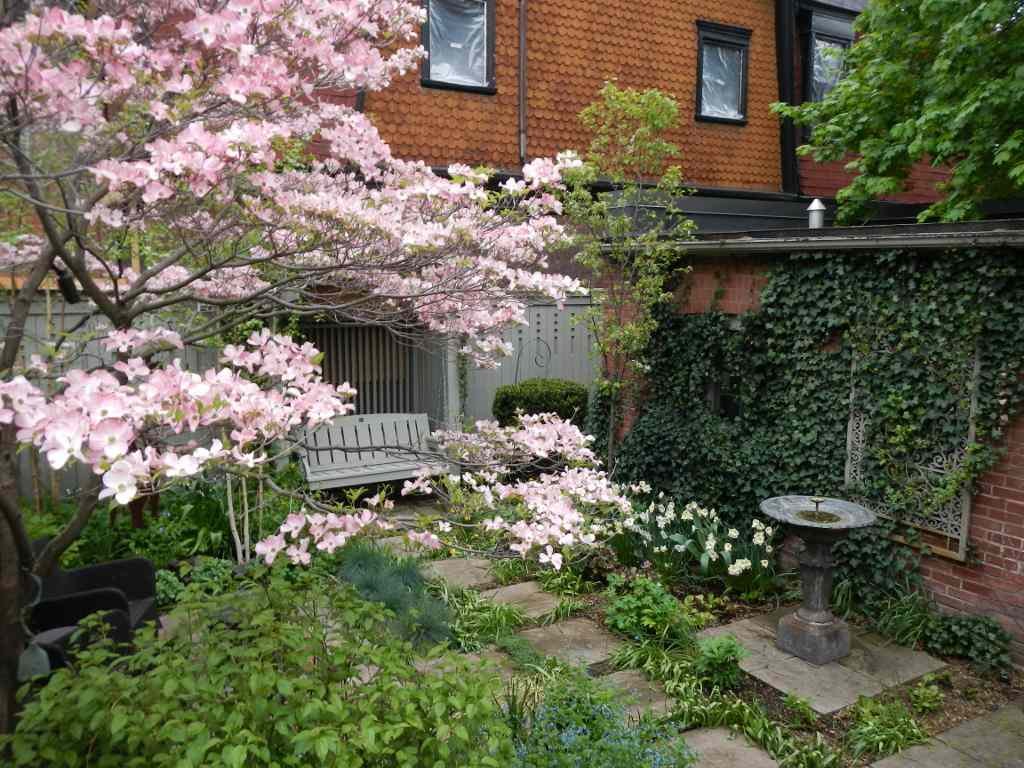
- Plan for mature size: Research how tall and wide the tree will get to avoid overcrowding.
- Mind the roots: Choose trees with non-invasive root systems that won’t damage sidewalks or foundations.
- Consider light and soil: Match the tree to the conditions of your space for best results.
- Think multi-season interest: Pick trees that offer blossoms, fruit, fall color, or winter appeal.
- Prune strategically: Regular, light pruning helps maintain shape and size in small yards.
Final Thoughts
A small backyard doesn’t mean you have to give up the beauty, shade, and charm that trees provide. By choosing species designed for compact spaces—like Japanese maples, serviceberries, or dwarf magnolias—you can create a vibrant, welcoming outdoor retreat that looks good year-round.
Urban gardening is about making the most of every square foot. With these eight trees that thrive in small urban backyards, you can enjoy the benefits of nature even in the heart of the city.
